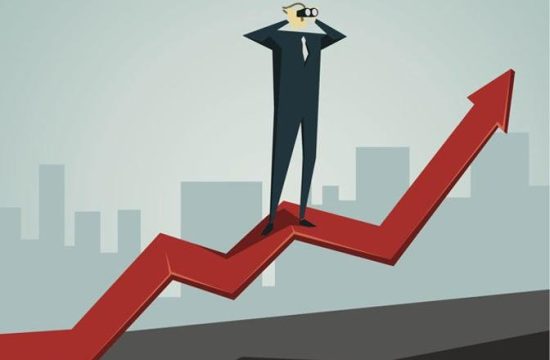 Shutterstock photo
Shutterstock photoWe were all taught as kids that knowledge is power. This statement is especially true when it comes to investing. In my opinion, the more knowledgeable an investor, the better decisions he/she will make when it comes to their personal finances. While you cannot substitute the experience and training of a qualified investment advisor, knowing the basics will help investors understand and guide the conversation to the things that matter most to them. It’s a lot like building a house. Without a solid foundation, the house will eventually crumble. This article is just that, a foundation to help you and your advisor build an investment portfolio that fits your needs.
I can appreciate the anxiety investors feel when it comes to the financial markets. I’ve been in this business for over 20 years, hold a CFA charter, and spent my entire adult life learning about macroeconomics, financial statements, earnings, etc. The average investor has only the media, social networks, and friends to explain things. Nobody expects the average person to become a professional investor, but learning the basics will help provide some context as you make investment decisions. (For more, see: Investing 101: What Is Investing?)
Why Invest?
Many people confuse investing with saving. They are very different. Saving is simply putting money in a relatively safe place like a bank account and in return receive some small interest on that money. Investing is a process that takes the power of compounding over time to create wealth. Investing does involve risk, so people need to take a prudent approach to achieve a specific goal. In other words, investing is the process of allocating capital within a comfortable level of risk to achieve an objective.
Keep the Financial Markets in Perspective
Things are never as bad as they seem and they are never as good as they seem. The financial markets are comprised of people. People have emotions and these emotions can be hard to control when things get bad. It is nearly impossible to anticipate day-to-day fluctuations in the market.
Investors are best served by staying focused on their long-term goals and ignoring short-term noise. You’re investing for a long period of time, so you should take a long-term view of your money. The markets will fluctuate day-to-day, month-to-month, and year-to-year. Over the last 10-year period ending March 31, 2017, the total return for the S&P 500 Index averaged +7.51%, annualized. Don’t forget, in 2008, we had the housing crisis causing the S&P 500 Index to fall -37%.
So, keep things in perspective. There will be bull markets and there will be bear markets. To be successful, continue to regularly contribute to your investment accounts, make changes to your asset allocation gradually, and tune out the noise.
What Are the Major Asset Classes?
While there are many asset classes, the three major asset classes are stocks, bonds, and cash. Each of these has its pros and cons. (For more, see: Defining the 3 Types of Investments.)
Stocks are shares of a company that trade on various exchanges. The broadest measures of the stock market are the S&P 500 Index or the Dow Jones Industrial Average. Stocks are generally more volatile and provide the highest potential return because of this risk. The performance of any individual stock is predicated on market conditions, macroeconomics, company earnings, industry outlook, and many other factors. Stocks can be categorized as international, domestic, large cap, small cap, growth, value, etc. In general, stocks tend to perform well following a recession and are negatively impacted when economic conditions contract.
Bonds, on the other hand, are considered debt. When an investor buys a bond, they are in essence lending money to the borrower and have the most protections if that borrower defaults. This doesn’t mean they can’t lose money, but lenders have more protections than stock owners. The biggest issuers in the bond market are federal governments and corporations. Investors can choose to invest in government bonds which are typically guaranteed to return your principal at maturity or corporate bonds that have credit risk but also pay higher interest than government bonds. Generally, bond investors are negatively impacted by higher interest rates and inflation, but perform well when economic conditions contract.
And finally, we have cash. Cash serves an important purpose. Typically, investors hold cash in their portfolio through money market funds. These are very liquid funds that have virtually no price movement and pay a small amount of interest. When markets are falling, cash is the best thing to hold as investors can then buy these discounted stocks. When markets are going higher, any cash allocation will be a drag on overall performance since it doesn’t earn very much and the opportunity cost is high.
The Importance of Diversification
No single asset allocation works for everyone, but investors can benefit from diversification. The old saying, “Don’t put all your eggs in one basket,†is the simplest way to explain diversification. Markets are unpredictable so it is prudent to hold investments that perform differently when market conditions change. By spreading out your investments across different asset classes, investors can reduce some of the fluctuations and smooth out their returns.
Mutual Funds or ETFs?
I often get the question of what’s better, mutual funds or exchange-traded funds (ETFs)? Mutual funds are investment vehicles that pool investors’ money together and invest in stocks, bonds, commodities, etc. Most people have used mutual funds in their 401(k) plans. There are many types of mutual funds and they can vary significantly in terms of cost.
ETFs are similar to mutual funds in that they hold a basket of securities. However, unlike mutual funds that are priced at the end of the day, ETFs trade throughout the day making it easier for investors to buy and sell. Mutual funds can only be bought or sold at the end of the day.
The recent growth in the ETF industry has provided investors with plenty of options. In general, I prefer to own low-cost investments for my clients. Many mutual funds have sales charges and expense ratios that can be as high as 2% annually. Why pay these high expenses when you can buy an ETF? As an example, the SPDR S&P 500 ETF (SPY) is an ETF that tracks the S&P 500 Index. Its expense ratio is only 0.09%. These savings are significant and can add up over time. (For more from this author, see: 4 Steps to Successful Retirement Savings.)
The views and opinions expressed herein are the views and opinions of the author and do not necessarily reflect those of Nasdaq, Inc.







